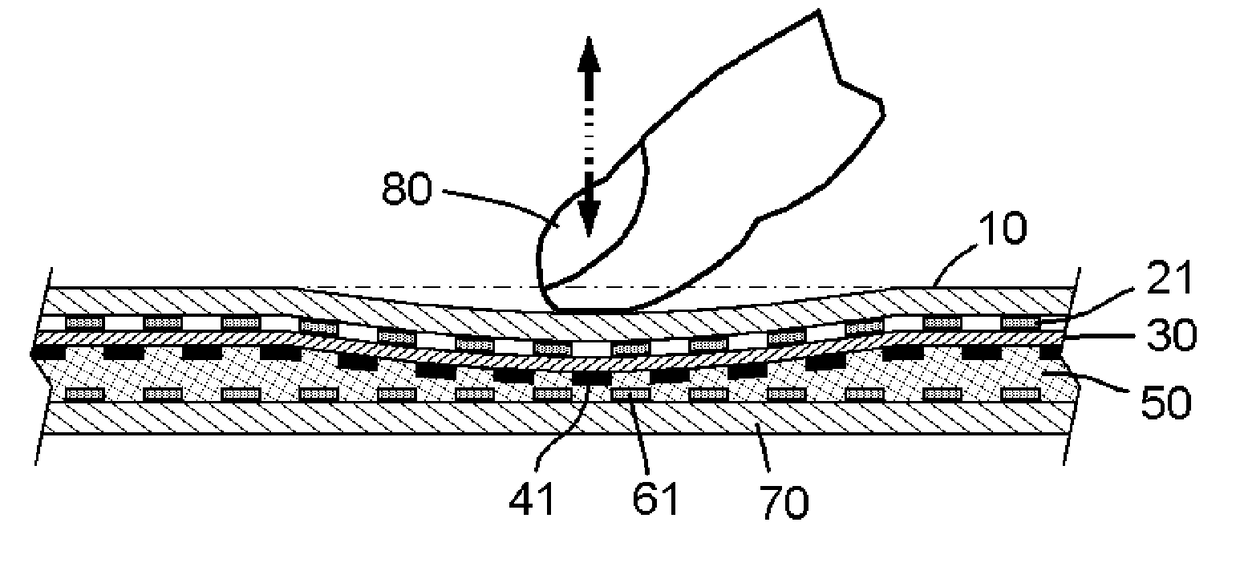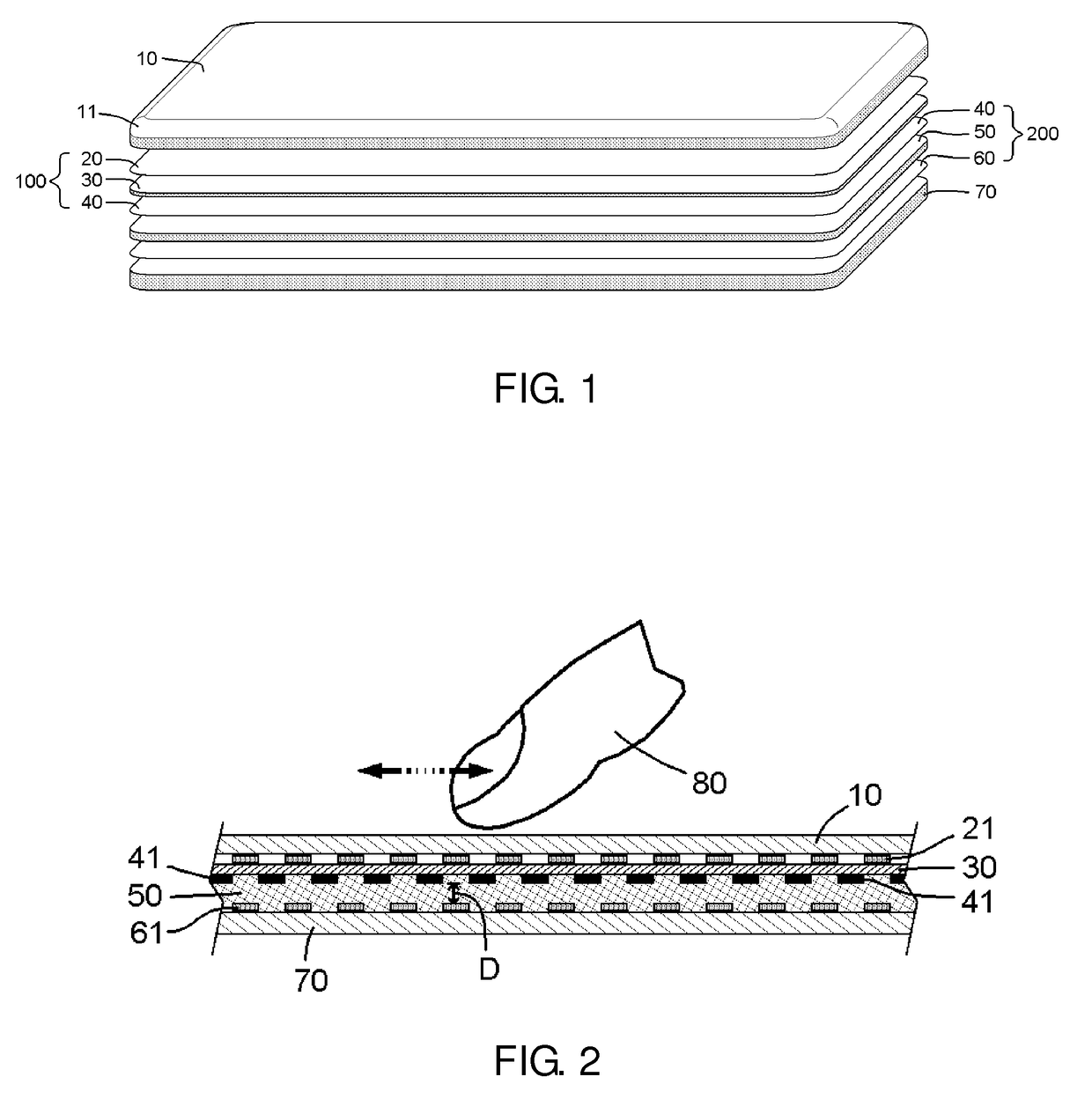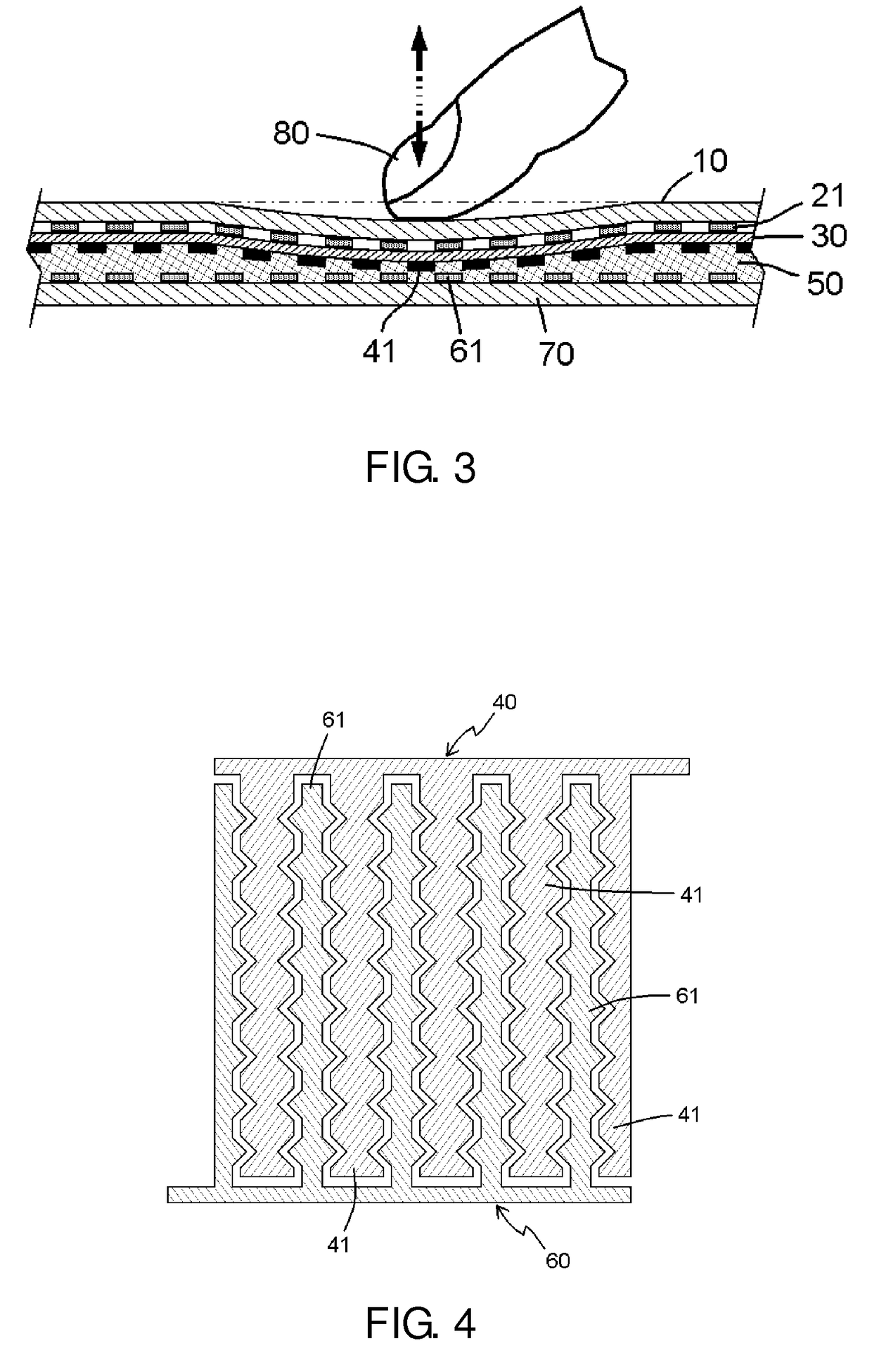Touch and pressure sensitive panel
- Summary
- Abstract
- Description
- Claims
- Application Information
AI Technical Summary
Benefits of technology
Problems solved by technology
Method used
Image
Examples
Embodiment Construction
[0022]Please refer to FIGS. 1 and 2. As shown, the touch and pressure sensitive panel of the invention includes a surface layer 10, a first electrode layer 20, an insulative layer 30, a second electrode layer 40, a strain isolation layer 50, a third electrode layer 60 and a base layer 70.
[0023]The surface layer 10 is made of a transparent sheet material, such as an optical glass sheet. To make the surface layer 10 flexible, its thickness is about 0.4 mm. Also, the surface layer 10 may be further reinforced by a chemical or tempering process. Additionally, each of four corners of the surface layer 10 is formed with a chamfering 11 to prevent the surface layer 10 from peeling off.
[0024]The first electrode layer 20 is a flexible transparent conductive film, such as an ITO (indium tin oxide) conductive film, and is sandwiched between the surface layer 10 and the insulative layer 30. There are sensing electrodes 21 at regular intervals on the first electrode layer 20.
[0025]The insulative...
PUM
 Login to View More
Login to View More Abstract
Description
Claims
Application Information
 Login to View More
Login to View More - R&D
- Intellectual Property
- Life Sciences
- Materials
- Tech Scout
- Unparalleled Data Quality
- Higher Quality Content
- 60% Fewer Hallucinations
Browse by: Latest US Patents, China's latest patents, Technical Efficacy Thesaurus, Application Domain, Technology Topic, Popular Technical Reports.
© 2025 PatSnap. All rights reserved.Legal|Privacy policy|Modern Slavery Act Transparency Statement|Sitemap|About US| Contact US: help@patsnap.com



